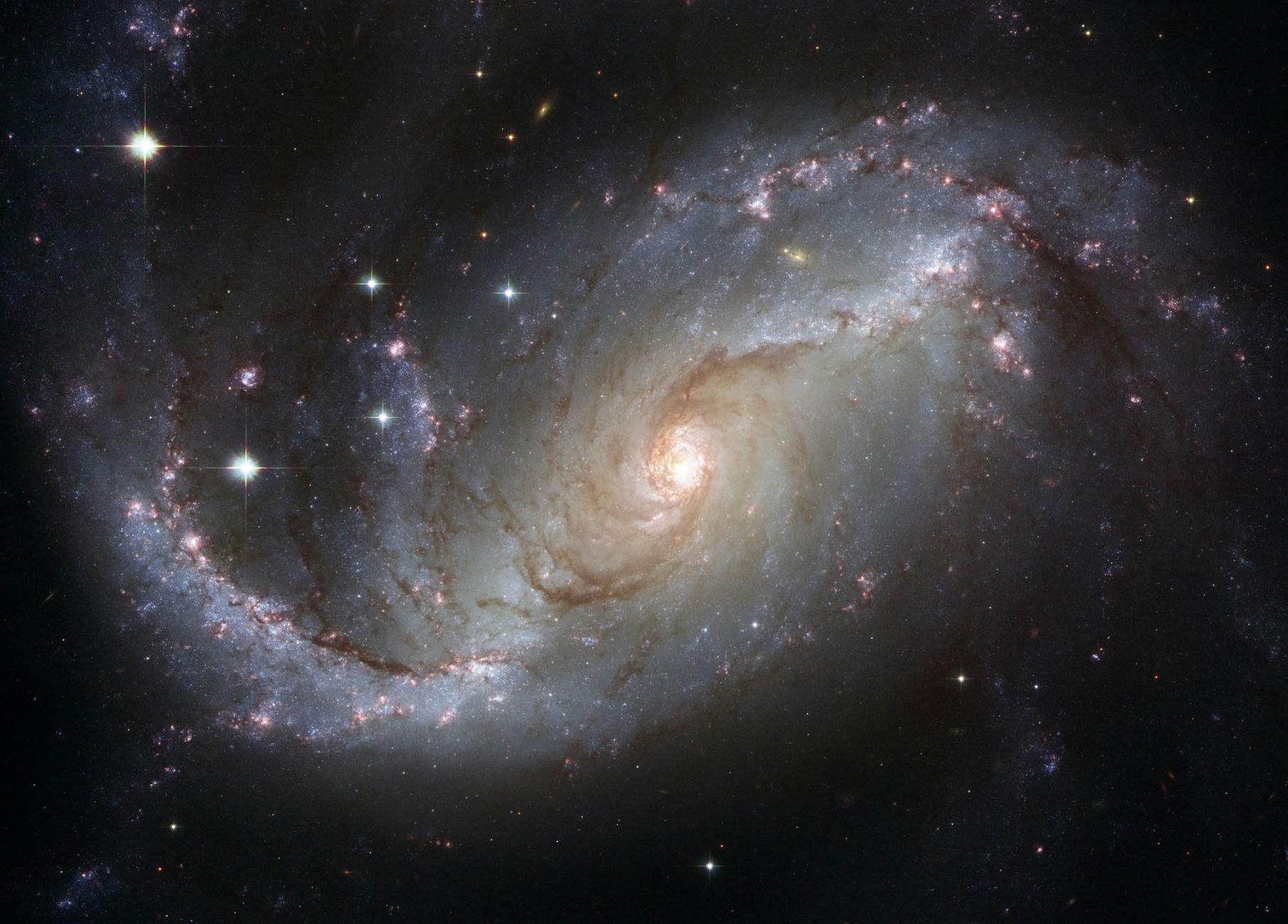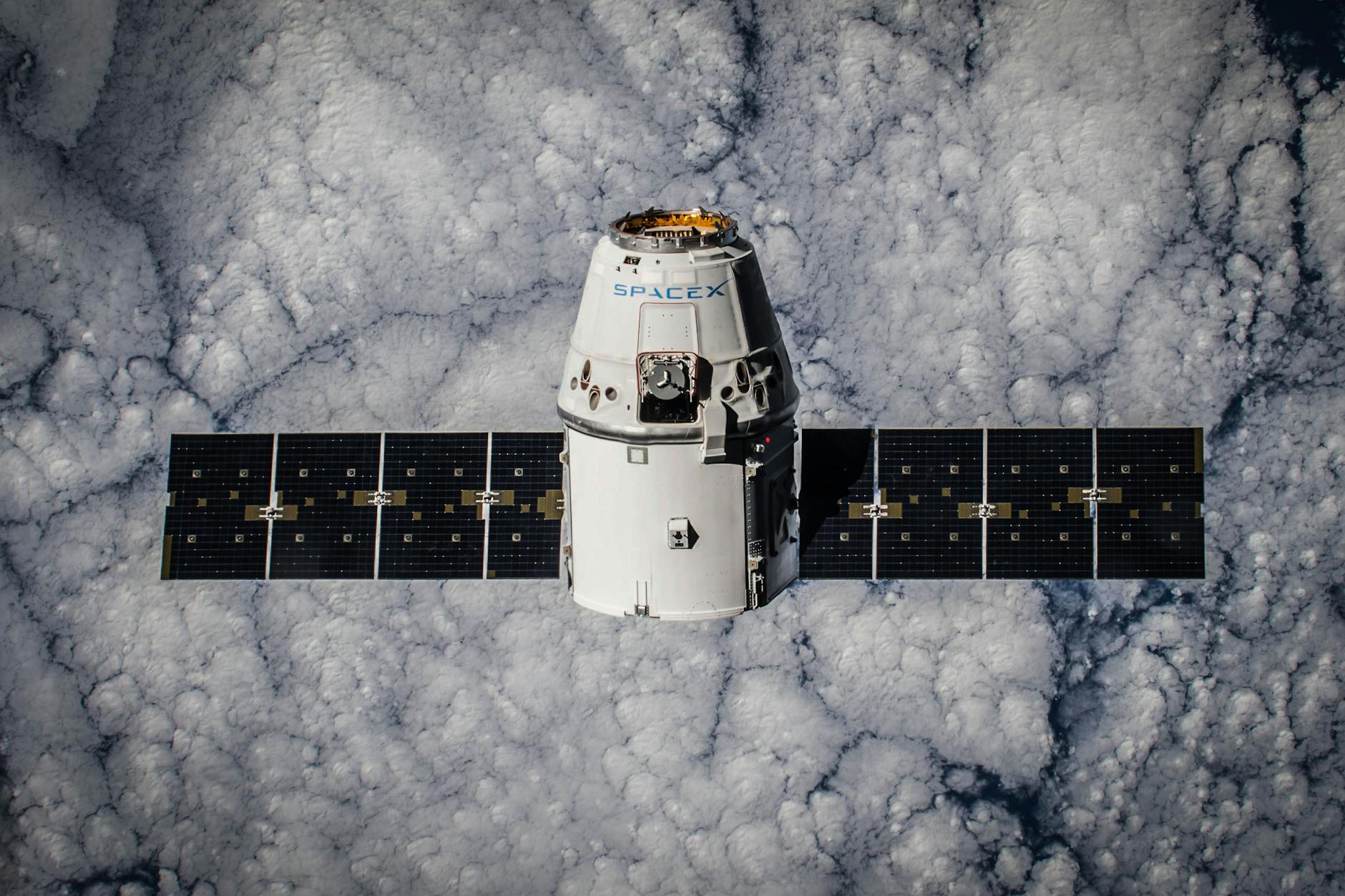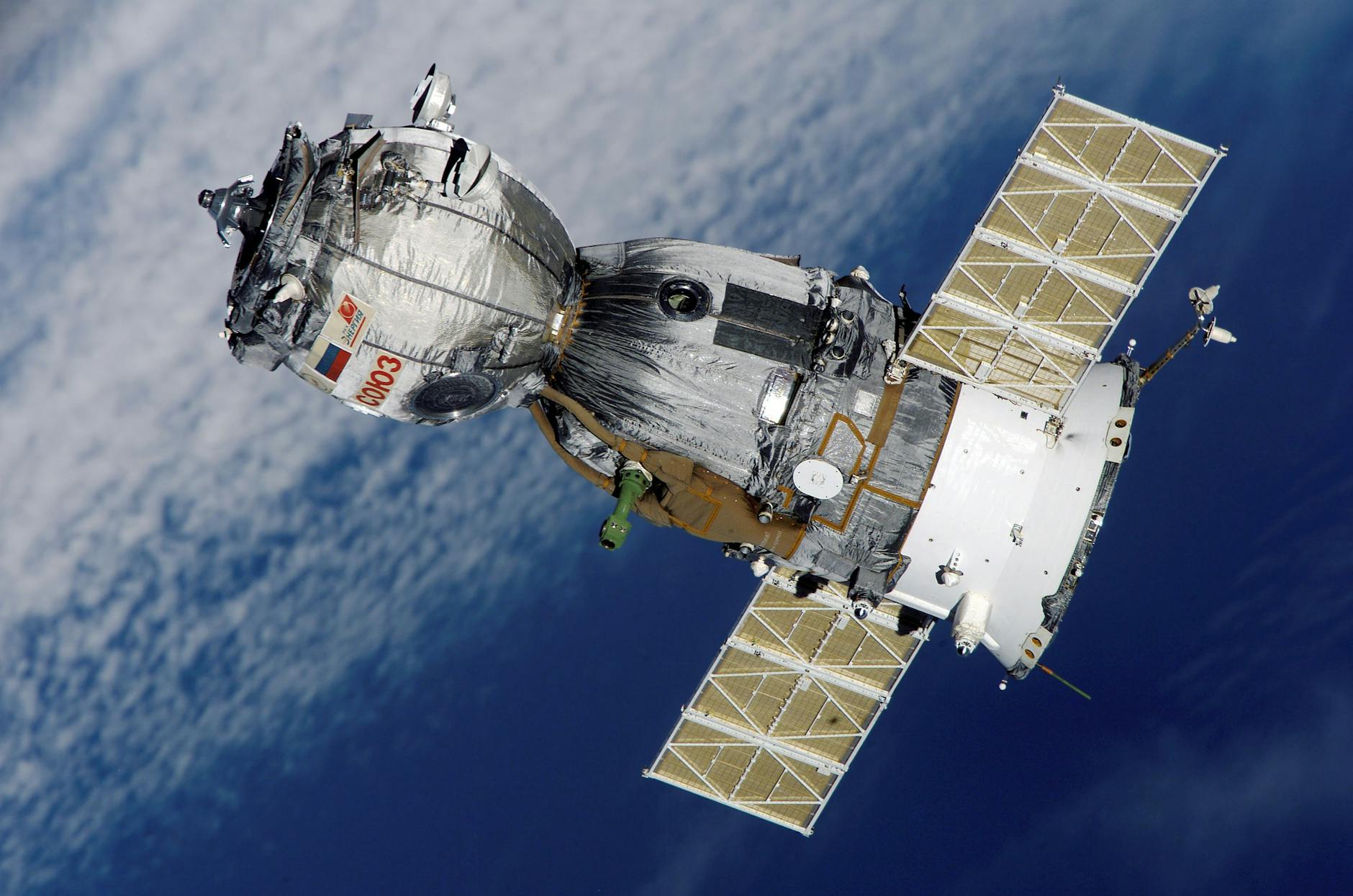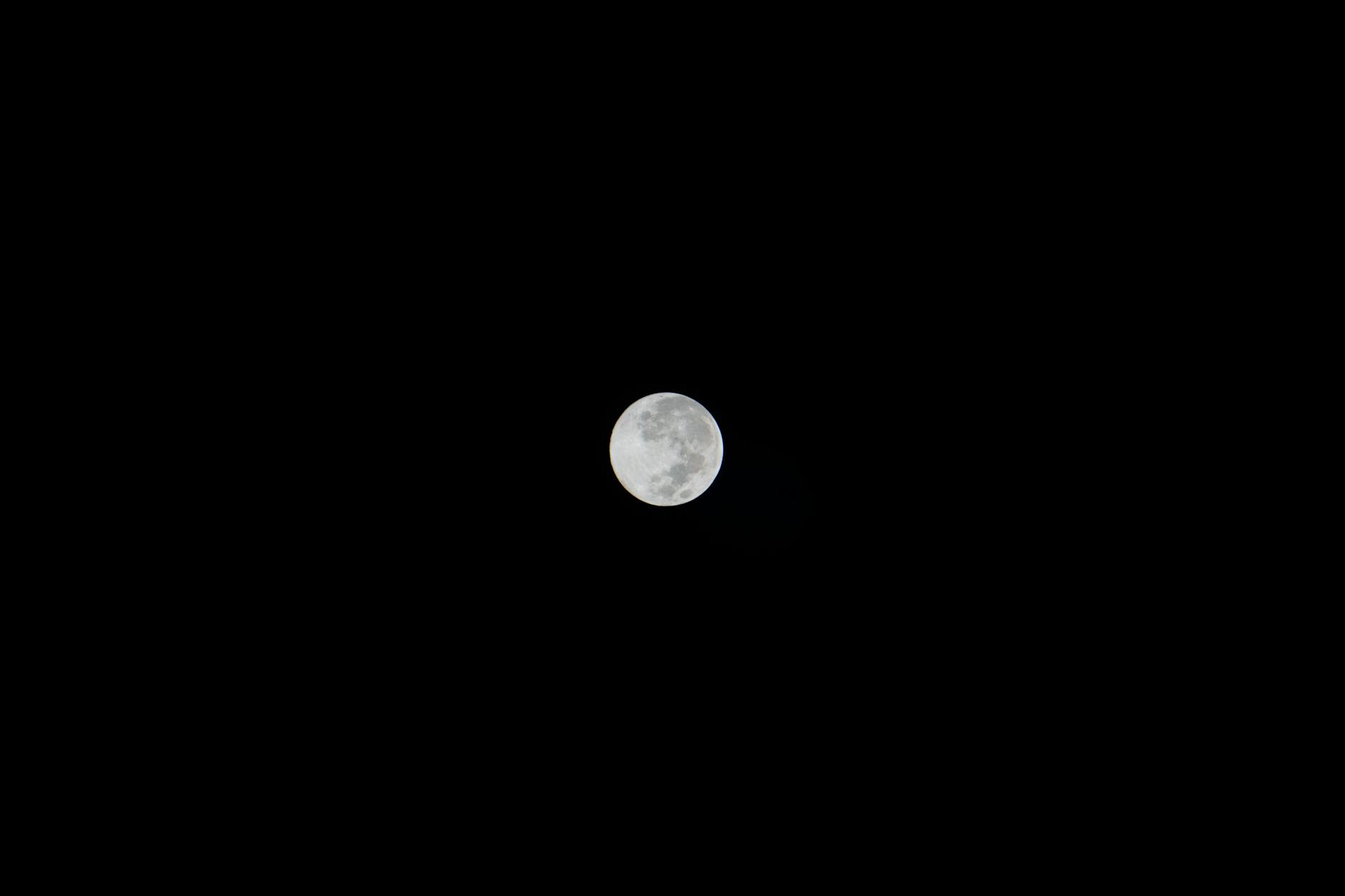
Have you ever gazed up at the night sky and spotted a moving “star” that wasn’t really a star at all? 🌠 That’s likely a satellite, one of thousands orbiting our planet right now. But have you ever wondered how these marvels of technology stay up there, seemingly defying gravity? 🛰️
The truth is, satellites are locked in a delicate dance with Earth’s gravitational pull, constantly falling towards our planet while simultaneously moving forward fast enough to miss it. This fascinating balancing act involves a complex interplay of forces, from orbital mechanics to atmospheric drag. Without careful management, even the most advanced satellite would plummet back to Earth or drift off into space.
In this post,we will explain How do satellites maintain orbit ? and we’ll unravel the mysteries behind satellite orbits. We’ll explore how these technological marvels maintain their celestial paths, from understanding Earth’s gravitational influence to the intricate systems that keep them on track. Get ready to dive into the world of orbital mechanics, propulsion systems, and the constant battle against external forces that threaten to disrupt these crucial links in our global communication network. 🌍📡
Understanding Earth’s Gravitational Pull :

A. The role of gravity in satellite orbits
Gravity plays a crucial role in keeping satellites in orbit around Earth. It’s the invisible force that continuously pulls satellites towards the planet’s center, preventing them from drifting off into space. This gravitational attraction is essential for maintaining stable orbits and enables satellites to perform their various functions, from communication to weather monitoring.
B. Balancing gravitational force with orbital velocity
To maintain a stable orbit, satellites must achieve a delicate balance between Earth’s gravitational pull and their own orbital velocity. This equilibrium is known as the “orbital sweet spot.” Here’s a breakdown of this balance:
| Factor | Description |
|---|---|
| Gravitational Force | Pulls satellite towards Earth |
| Orbital Velocity | Propels satellite forward, counteracting gravity |
| Centrifugal Force | Created by orbital motion, opposes gravitational pull |
The key to maintaining orbit lies in achieving the perfect orbital velocity. If a satellite moves too slowly, Earth’s gravity will pull it downward. If it moves too fast, it will escape Earth’s gravitational field entirely.
C. How satellites avoid falling back to Earth
Satellites avoid falling back to Earth by maintaining sufficient orbital velocity. This speed creates a centrifugal force that counteracts Earth’s gravitational pull. The formula for orbital velocity is:
v = √(GM/r)
Where:
- v is orbital velocity
- G is the gravitational constant
- M is Earth’s mass
- r is the orbital radius
By carefully calculating and maintaining this velocity, satellites can remain in orbit indefinitely. However, various factors can affect a satellite’s orbit over time, necessitating occasional adjustments to ensure long-term stability.
Orbital Mechanics: The Key to Satellite Stability :

Kepler’s laws of planetary motion
Kepler’s laws of planetary motion form the foundation for understanding satellite orbits. These laws, discovered by Johannes Kepler in the early 17th century, describe the motion of planets around the Sun but also apply to artificial satellites orbiting Earth.
- First Law: Orbits are elliptical, with the Earth at one focus
- Second Law: A line joining a satellite and Earth sweeps out equal areas in equal times
- Third Law: The square of the orbital period is proportional to the cube of the semi-major axis
These laws help explain how satellites maintain their orbits and predict their positions accurately.
Types of satellite orbits
Satellites can occupy various types of orbits, each serving specific purposes:
| Orbit Type | Altitude Range | Characteristics |
|---|---|---|
| Low Earth Orbit (LEO) | 160-2,000 km | Fast orbital period, used for Earth observation |
| Medium Earth Orbit (MEO) | 2,000-35,786 km | Used for navigation satellites like GPS |
| Geostationary Orbit (GEO) | 35,786 km | Appears stationary relative to Earth, used for communications |
| Polar Orbit | Various | Passes over Earth’s poles, used for global coverage |
Factors affecting orbital stability
Several factors influence a satellite’s orbital stability:
- Gravitational forces from the Earth, Moon, and Sun
- Atmospheric drag (for lower orbits)
- Solar radiation pressure
- Earth’s non-uniform gravitational field
The concept of orbital period
The orbital period is the time it takes for a satellite to complete one revolution around Earth. It’s directly related to the satellite’s altitude:
- Higher orbits have longer periods
- Lower orbits have shorter periods
For example, satellites in LEO can complete an orbit in about 90 minutes, while those in GEO take 24 hours, matching Earth’s rotation.
Understanding these principles is crucial for maintaining satellite orbits. Next, we’ll explore how satellites maintain the right altitude to stay in their designated orbits.
Maintaining the Right Altitude :

Low Earth Orbit (LEO) challenges
Low Earth Orbit (LEO) presents unique challenges for satellite altitude maintenance. Satellites in LEO face significant atmospheric drag, requiring frequent altitude adjustments. Here are the key challenges:
- Atmospheric density variations
- Solar activity effects
- Collision risks with space debris
To overcome these challenges, LEO satellites employ various strategies:
- Regular thruster firings
- Drag-compensating systems
- Advanced orbital prediction algorithms
| Challenge | Impact | Mitigation Strategy |
|---|---|---|
| Atmospheric drag | Orbit decay | Periodic boost maneuvers |
| Solar activity | Increased drag | Adaptive altitude control |
| Space debris | Collision risk | Avoidance maneuvers |
Medium Earth Orbit (MEO) considerations
MEO satellites operate at higher altitudes, facing different challenges compared to LEO. Key considerations include:
- Reduced atmospheric drag
- Increased radiation exposure
- Longer orbital periods
MEO satellites require less frequent altitude adjustments but must contend with:
- Gravitational perturbations from the Moon and Sun
- Earth’s non-spherical shape effects
- Solar radiation pressure
Geostationary Earth Orbit (GEO) advantages
GEO offers unique advantages for satellite altitude maintenance:
- Constant position relative to Earth
- Minimal atmospheric drag
- Stable communications link
However, GEO satellites still require precise station-keeping:
- North-South drift correction
- East-West drift correction
- Eccentricity control
| Orbit Type | Altitude Range | Main Advantage |
|---|---|---|
| LEO | 160-2,000 km | Global coverage |
| MEO | 2,000-35,786 km | Wide regional coverage |
| GEO | 35,786 km | Fixed Earth position |
With these considerations in mind, let’s explore how satellites overcome atmospheric drag to maintain their orbits.
Overcoming Atmospheric Drag :

Effects of atmospheric friction on satellites
Atmospheric drag is a significant challenge for satellites in low Earth orbit. As satellites move through the thin upper atmosphere, they encounter particles that create friction, slowing them down and gradually lowering their altitude. This effect is more pronounced for satellites orbiting closer to Earth, where the atmosphere is denser.
| Altitude Range | Atmospheric Density | Drag Effect |
|---|---|---|
| 200-400 km | Higher | Severe |
| 400-600 km | Moderate | Noticeable |
| 600-800 km | Lower | Minimal |
Strategies for minimizing drag
To counteract atmospheric drag, satellite operators employ several strategies:
- Orbit selection: Choosing higher orbits with less atmospheric density
- Periodic boosting: Using onboard thrusters to maintain altitude
- Solar cycle timing: Launching during solar minimum when the atmosphere is less expanded
The role of satellite shape and design
Satellite design plays a crucial role in minimizing atmospheric drag. Engineers focus on:
- Streamlined shapes to reduce frontal area
- Smooth surfaces to decrease friction
- Deployable solar panels that can be oriented to minimize drag
By optimizing these factors, satellites can maintain their orbits more efficiently, extending their operational lifetimes and reducing the need for frequent orbital corrections. This careful balance of design and strategy is essential for satellites to overcome atmospheric drag and continue their vital missions in Earth’s orbit.
Propulsion Systems for Orbit Correction :
Types of satellite thrusters
Satellites employ various types of thrusters to maintain their orbits and perform station-keeping maneuvers. Here are the most common types:
- Chemical thrusters
- Electric propulsion systems
- Cold gas thrusters
- Plasma thrusters
| Thruster Type | Advantages | Disadvantages |
|---|---|---|
| Chemical | High thrust, quick response | Low fuel efficiency |
| Electric | High fuel efficiency, long lifespan | Low thrust, slow acceleration |
| Cold gas | Simple, reliable, precise | Low specific impulse |
| Plasma | High specific impulse, long duration | Complex, high power requirements |
Station-keeping maneuvers
Station-keeping maneuvers are critical for maintaining a satellite’s desired orbit. These maneuvers compensate for various perturbations that can affect a satellite’s position. Common station-keeping maneuvers include:
- North-South station-keeping
- East-West station-keeping
- Inclination control
- Eccentricity control
Fuel efficiency in orbital adjustments
Fuel efficiency is crucial for prolonging a satellite’s operational lifespan. To optimize fuel usage during orbital adjustments, satellite operators employ several strategies:
- Minimize the frequency of maneuvers
- Use low-thrust, high-efficiency propulsion systems
- Implement precise orbital predictions
- Utilize natural orbital dynamics when possible
By carefully planning and executing these strategies, satellites can maintain their orbits for extended periods, ensuring continued functionality and mission success. Next, we’ll explore how satellites deal with external forces that can impact their orbits.
Dealing with External Forces :

Solar radiation pressure
Solar radiation pressure is a subtle yet significant force that affects satellites in orbit. This phenomenon occurs when photons from the Sun collide with the satellite’s surface, exerting a small but continuous force. The impact of solar radiation pressure varies depending on the satellite’s size, shape, and orientation.
- Factors influencing solar radiation pressure:
- Satellite surface area
- Reflectivity of materials
- Angle of incidence of sunlight
To mitigate the effects of solar radiation pressure, satellite engineers employ various strategies:
- Adjusting satellite orientation
- Using specialized coatings
- Implementing active control systems
| Strategy | Description | Effectiveness |
|---|---|---|
| Orientation adjustment | Aligning surfaces to minimize exposure | Moderate |
| Specialized coatings | Applying materials to reduce reflectivity | High |
| Active control systems | Using thrusters to counteract pressure | Very high |
Gravitational influences of the Moon and Sun
While Earth’s gravity is the primary force keeping satellites in orbit, the Moon and Sun also exert gravitational pulls that can affect a satellite’s trajectory. These influences, known as third-body perturbations, cause periodic variations in a satellite’s orbit.
Magnetic field interactions
Earth’s magnetic field interacts with any magnetic materials or electrical currents on board a satellite. This interaction can cause small torques, potentially altering the satellite’s orientation or orbit over time. To counteract these effects, satellites often employ:
- Magnetic torquers for attitude control
- Shielding for sensitive components
- Careful placement of electrical systems
Understanding and accounting for these external forces is crucial for maintaining stable satellite orbits. Engineers must continuously monitor and adjust satellite positions to ensure they remain in their intended paths around Earth.
Monitoring and Control Systems :

Ground-based tracking stations
Ground-based tracking stations play a crucial role in monitoring and controlling satellites in orbit. These stations form a global network that continuously tracks satellites, ensuring their precise location and status. Here’s how they contribute to maintaining satellite orbits:
- Continuous communication with satellites
- Data collection and analysis
- Real-time position tracking
- Early detection of orbital deviations
| Function | Description |
|---|---|
| Telemetry reception | Receives data from satellite sensors |
| Command transmission | Sends instructions for orbital corrections |
| Ranging | Measures precise distance to satellite |
| Doppler tracking | Determines satellite velocity |
Onboard sensors and telemetry
Satellites are equipped with sophisticated onboard sensors and telemetry systems that provide crucial data for maintaining their orbits. These systems work in tandem with ground-based stations to ensure accurate positioning and orbital stability.
- GPS receivers for precise positioning
- Accelerometers to measure non-gravitational forces
- Star trackers for attitude determination
- Magnetometers to detect Earth’s magnetic field
The telemetry system transmits this data to ground stations, allowing for real-time monitoring and analysis of the satellite’s orbit and overall health.
Automated orbital correction algorithms
To maintain their orbits efficiently, satellites employ automated orbital correction algorithms. These sophisticated programs analyze data from onboard sensors and ground-based tracking stations to determine when and how to adjust the satellite’s orbit.
Key features of these algorithms include:
- Predictive modeling of orbital decay
- Fuel-efficient correction maneuvers
- Collision avoidance calculations
- Adaptive learning for improved accuracy
By combining ground-based tracking, onboard sensors, and automated algorithms, satellites can maintain their orbits with remarkable precision, ensuring their continued functionality and longevity in space.

Satellites maintain their orbit through a delicate balance of Earth’s gravitational pull and their own velocity. This intricate dance involves precise calculations of orbital mechanics, careful altitude management, and constant adjustments to overcome atmospheric drag and other external forces. Advanced propulsion systems and sophisticated monitoring and control mechanisms play crucial roles in keeping satellites in their designated paths.
As we continue to rely on satellites for communication, navigation, and scientific research, understanding and improving orbital maintenance techniques becomes increasingly important. The ability to keep satellites in stable orbits not only ensures the continuity of vital services but also helps manage the growing issue of space debris. By mastering the art and science of satellite orbit maintenance, we pave the way for more efficient and sustainable use of Earth’s orbital space.











